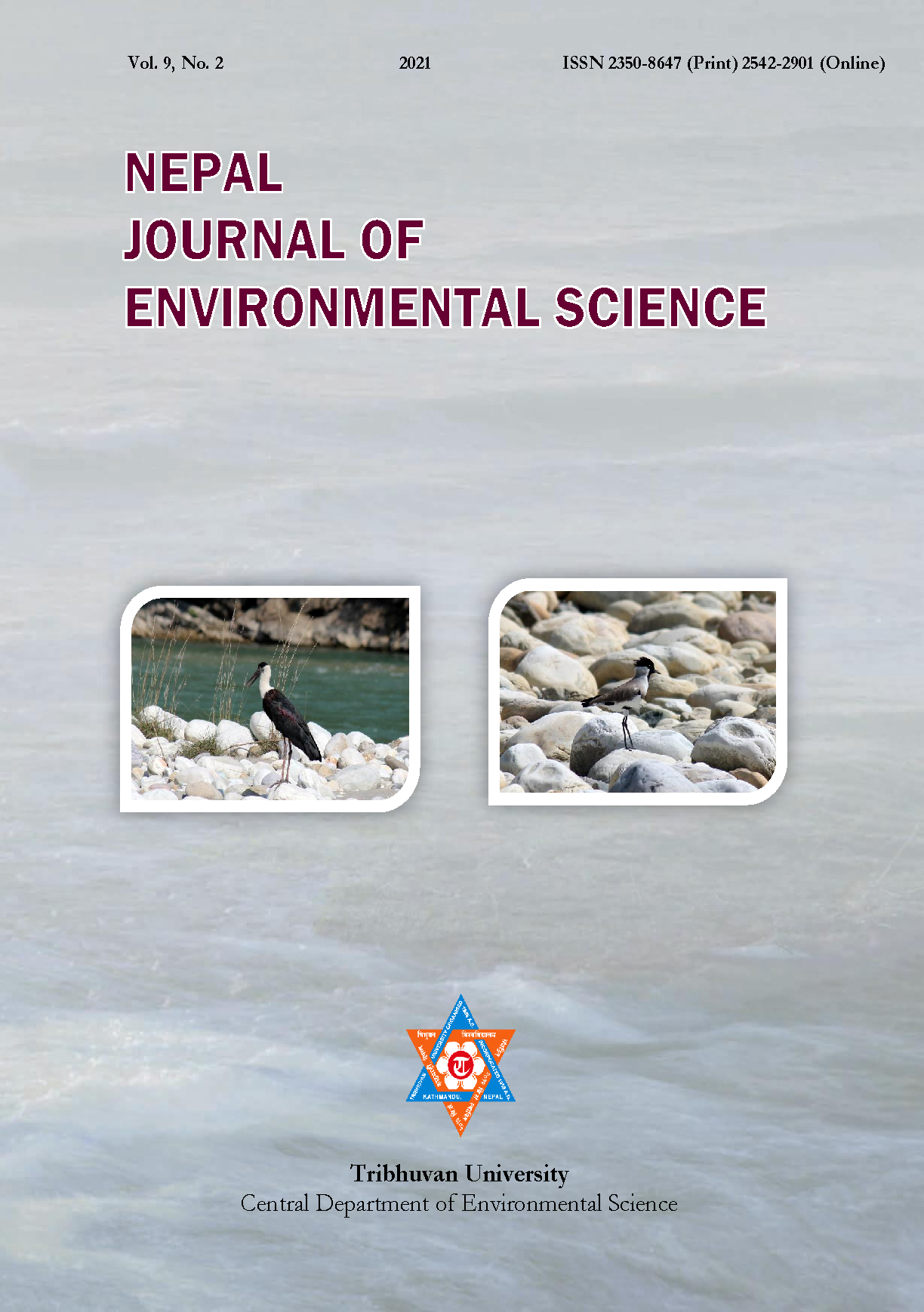Macroinvertebrate assemblages in mountain tributaries of glacial-fed and rain-fed rivers in eastern Nepal
DOI:
https://doi.org/10.3126/njes.v9i2.39988Keywords:
EPT-taxa, glacial-fed tributaries, macroinvertebrates, rain-fed tributariesAbstract
While river macroinvertebrates are the most widely used form of bioindicators, their baseline information, although crucial, is scarce in Nepal. The main objective of this study was to assess the macroinvertebrate assemblages in mountain tributaries of the glacial-fed Tamor and rain-fed Kamala rivers. A total of eight sites were sampled during March 2015 (Spring), November 2015 (Autumn), January 2016 (Winter), and May 2016 (Summer). Altogether, 49 Families of macroinvertebrates belonging to 15 Orders were identified with 39 Families and 12 Orders in Tamor’s tributaries, and 33 Families and 10 Orders in Kamala’s tributaries. Non-metric multi-dimensional scaling (NMDS) revealed different assemblages between the two river systems. The most dominant Order in the Tamor was Ephemeroptera and it was Trichoptera in the Kamala. EPT (Ephemeroptera Plecoptera Trichoptera) assemblages were the most abundant in all four seasons for both the river systems and higher % EPT in Tamor’s tributaries indicate better water quality than in the Kamala's tributaries. Typical cold water adapted Families such as Rhyacophilidae and Stenopsychidae were observed in Tamor’s tributaries whereas in Kamala’s tributaries, warm water adapted Families like Naididae and Thiaridae were found, reflecting a difference in the abiotic variables such as temperature, dissolved oxygen attributed to each of the catchments. This baseline data can serve as the foundation for further bioassessment including those of climate change impacts on aquatic biodiversity.
Downloads
Downloads
Published
How to Cite
Issue
Section
License
Copyright (c) 2021 Central Department of Environmental Science, Tribhuvan University

This work is licensed under a Creative Commons Attribution-NonCommercial 4.0 International License.
This license enables reusers to distribute, remix, adapt, and build upon the material in any medium or format for noncommercial purposes only, and only so long as attribution is given to the creator.

